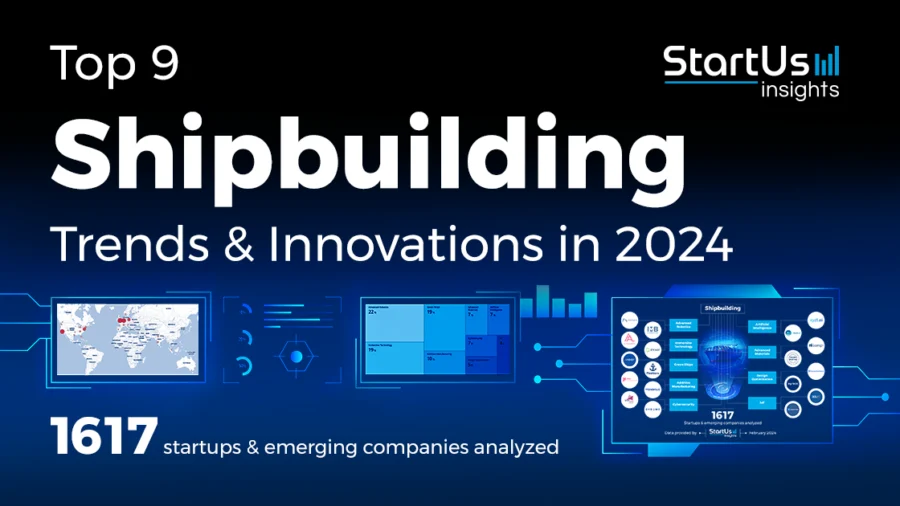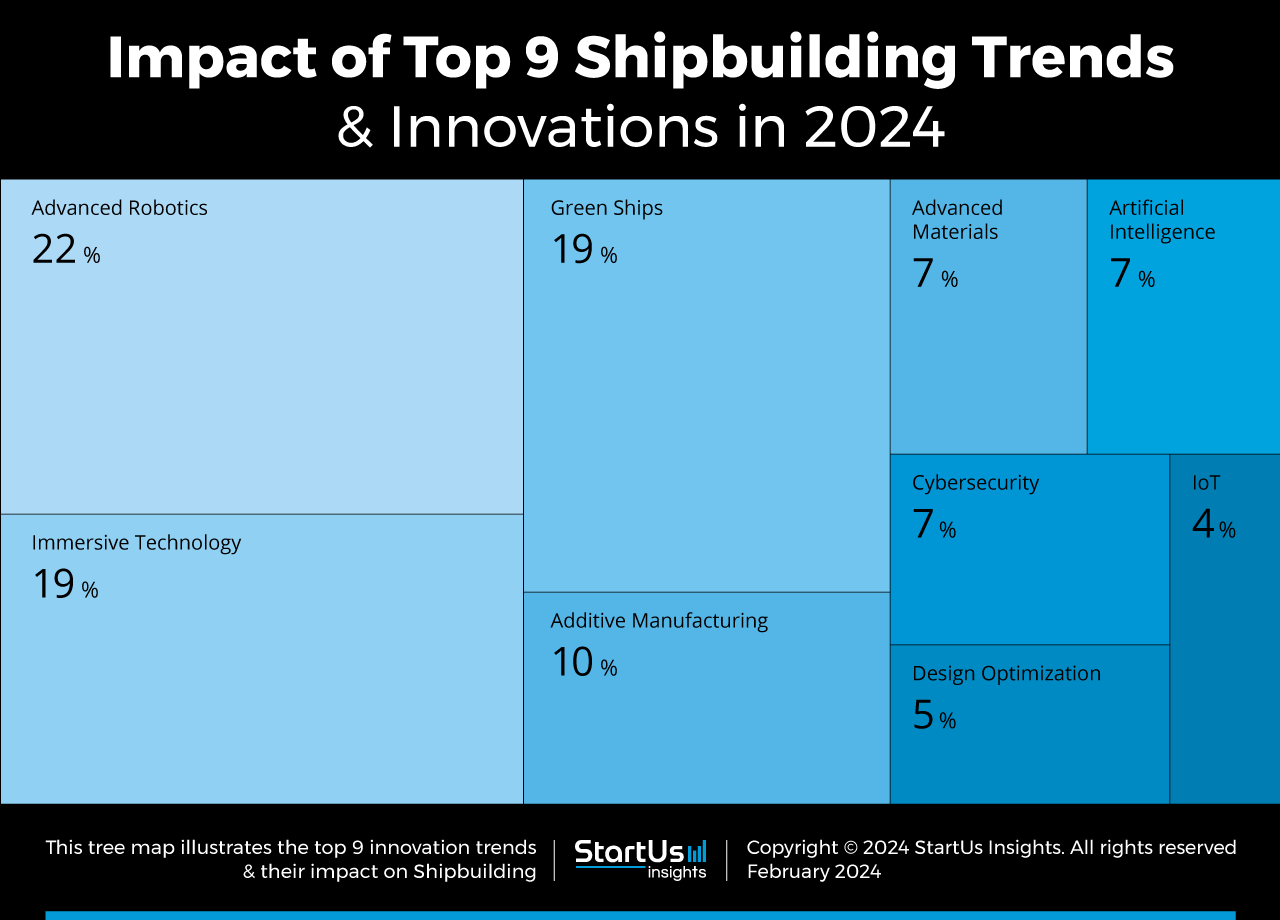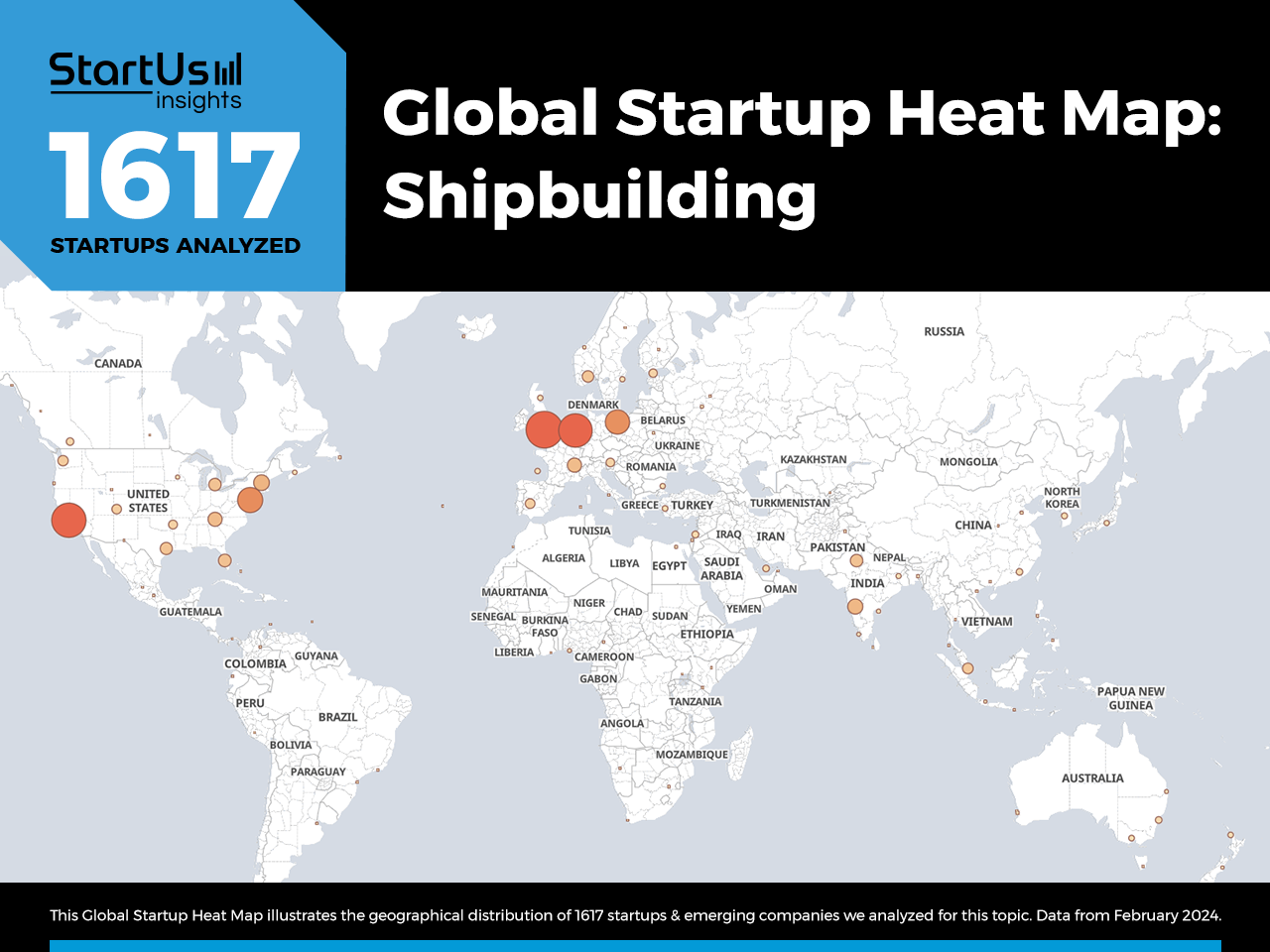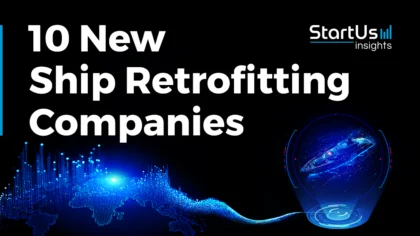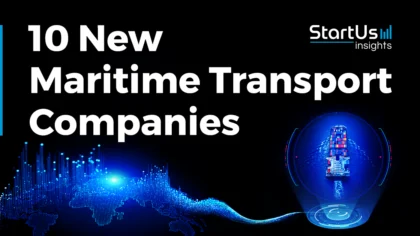Ships maintain global supply chains while forecasts indicate an upward trend in maritime shipping. To facilitate this, shipbuilders are utilizing smart and connected technologies to construct bigger, and more eco-friendly ships. Moreover, smart building solutions easily enable shipbuilders to accommodate local and international shipping regulations during the design stage of shipbuilding.
e provide a comprehensive view of global shipbuilding trends for you to follow the latest developments in the industry. For example, shipbuilders are utilizing 3D modeling to simulate ocean conditions and create ships with optimal structural features. Read more to explore the top trends impacting shipbuilding.
This article was last updated in July 2024.
What are the Top Shipbuilding Trends (2025)?
- Advanced Robotics
- Immersive Technology
- Green Ships
- Additive Manufacturing
- Cybersecurity
- Artificial Intelligence
- Advanced Materials
- Design Optimization
- Internet of Things
Innovation Map outlines the Top 9 Shipbuilding Industry Trends & 18 Promising Startups
For this in-depth research on the Top Shipbuilding Trends and startups, we analyzed a sample of 1617 global startups & scaleups. This data-driven research provides innovation intelligence that helps you improve strategic decision-making by giving you an overview of emerging technologies in the shipbuilding industry. In the Shipbuilding Innovation Map below, you get a comprehensive overview of the innovation trends & startups that impact your company.
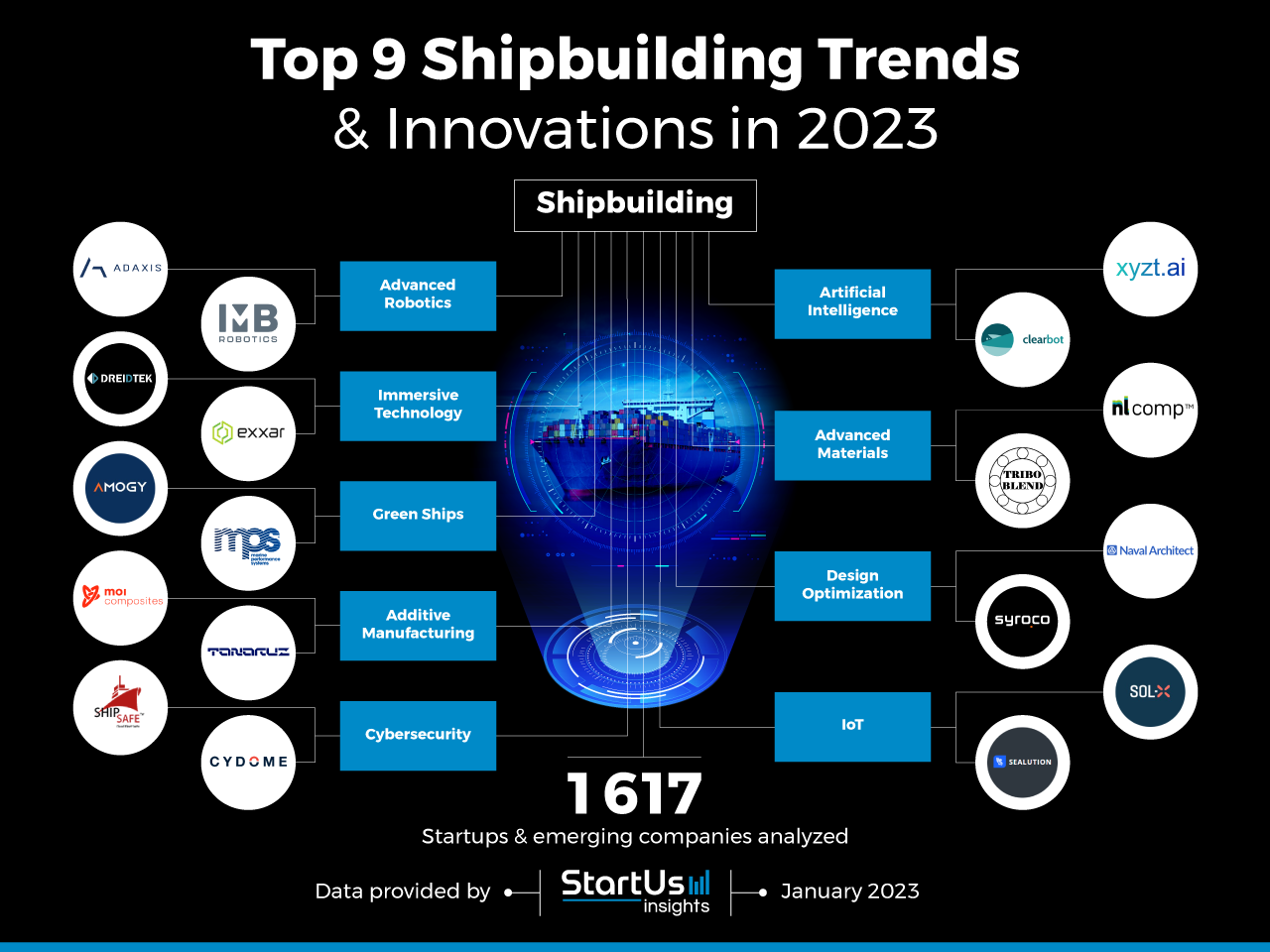
Click to download
These insights are derived by working with our Big Data & Artificial Intelligence-powered StartUs Insights Discovery Platform, covering 4.7M+ & scaleups globally. As the world’s largest resource for data on emerging companies, the SaaS platform enables you to identify relevant technologies and industry trends quickly & exhaustively.
Tree Map reveals the Impact of the Top 9 Shipbuilding Trends
Based on the Shipbuilding Innovation Map, the Tree Map below illustrates the impact of the Top 9 Shipbuilding Trends in 2025. Developments in advanced robotics, immersive technology, and design optimization are enabling faster and more efficient ship construction. Advancements in green ships, additive manufacturing, and advanced materials utilize robotics with stronger and sustainable materials to create lighter, sturdier, and more fuel-efficient ships that also promote circular economies.
Additionally, cybersecurity reduces cyber risks by protecting modern ship systems, sensors, and their endpoints. Besides, Artificial Intelligence (AI) provides insights into vessels, monitors them, and automates their functions. Lastly, the Internet of Things (IoT) monitors worker safety and reduces accidents by continuously collecting sensor data from below-deck equipment.
Global Startup Heat Map covers 9 Shipbuilding Startups & Scaleups
The Global Startup Heat Map below highlights the global distribution of the 1617 exemplary startups & scaleups that we analyzed for this research. Created through the StartUs Insights Discovery Platform, the Heat Map reveals that Western Europe sees the most startup activity.
Below, you get to meet 18 out of these 1617 promising startups & scaleups as well as the solutions they develop. These 18 startups are hand-picked based on criteria such as founding year, location, funding raised, and more. Depending on your specific needs, your top picks might look entirely different.
Top 9 Shipbuilding Trends in 2025
1. Advanced Robotics
In the shipbuilding industry, the use of advanced robotics is on the rise. This trend is driven by the need to automate construction tasks, given the high skill level and labor intensity involved. With the increasing size of ships, the workforce is often faced with long hours and demanding tasks such as welding, cutting, and painting.
To meet tight deadlines for launching large vessels, robotic systems are employed. These systems not only mitigate the risk of injury but also enhance the efficiency of the shipbuilding process. Furthermore, robotics finds its application in ship maintenance and repair, leading to quicker turnaround times and elevated safety standards.
Adaxis advances Flexible Robotic 3D Printing
Adaxis is a French startup that builds a software platform to turn robots into 3D printers. Its AdaOne software features customizable robot programs and multi-axis path planning. It also generates and optimizes tool orientation based on part geometry. Additionally, it has collision detection capabilities and optimizes part printing by defining zones with custom path planning settings. Moreover, the software integrates with existing robotic infrastructure to turn them into 3D printers. This way, Adaxis enables shipbuilders to use 6-axis robots for building the structural components, improving production speed and material use.
IMB Robotics creates Surface Preparation Robots
IMB Robotics is a Turkish startup that manufactures a range of robots to inspect and treat the surfaces of ships. Its ROBOJET is a surface preparation crawler that attaches to ships’ hulls using magnets. It also features a vacuum system to suction off the removed waste material and wastewater.
Besides this, the robot is remotely operable and uses a closed system to collect hazardous contaminants. The robot also functions semi-autonomously with high maneuverability from its two individual electrical drives. IMB Robotics, thus, cleans steel surfaces on ships reducing the effort in frequent cleaning operations while reducing human exposure to potentially hazardous contaminants.
2. Immersive Technology
In the complex process of ship design, startups are turning to Augmented Reality (AR) and Virtual Reality (VR). These immersive technologies allow the creation of 3D virtual models of designs and user avatars. Engineers use these models to conduct ergonomics reviews, reachability studies, and maintenance operations.
They also check for potential collision points on ships between the virtual human and the 3D ship model. This optimizes delivery time and quality and enhances communication between teams. Moreover, immersive technologies play a crucial role in safety training by offering realistic simulations of challenging scenarios without any risks.
Alphaabets Digital Labs develops Digital Twin Technology for Shipbuilders
Indian startup Alphaabets Digital Labs leverages 3D technologies to revolutionize shipbuilding, offering innovative solutions to industry challenges. For example, extended product development cycles or a lack of digital collaboration between shipyards and suppliers. By employing ‘3D Engineering Twins’ and advanced simulations, the startup identifies and rectifies design flaws, leading to substantial cost and time savings.
Apart from digital twins, other applications of Alphaabets’ solutions include enhanced collaborative shipbuilding design, digital manufacturing integration, and 3D mock-ups for shipyards and machinery, among others.
Exxar Cloud develops Extended Reality (XR)-powered CAD
Exxar Cloud is a US-based startup that develops no-code VR and AR software for design collaboration. Its solution lets ship designers and builders conduct design reviews in VR and monitor production and inspections with AR. The solution also connects a variety of 3D CAD applications like Aveva, SOLIDWORKS, Navisworks, Catia, Creo, Solid Edge, and Siemens NX to stream lossless 3D CAD data into Exxar’s Reality Visualization engine. Moreover, this solution reduces delays in shipbuilding by eliminating rework and improving project efficiency, thus, leading to better client satisfaction.
3. Green Ships
Maritime transportation, a dominant force in global trade, comes with a downside – environmental pollution. Startups are stepping up to address this issue by developing alternative clean fuels and renewable energy solutions for ships. In response to increasing environmental regulations, shipbuilders are turning to sustainable materials and software to boost the fuel efficiency of ship engines. Advanced hull designs and propeller optimizations are being used to enhance energy efficiency in these green ships, leading to minimized fuel consumption.
Amogy develops Carbon-Free Ammonia Fuel
US-based startup Amogy provides emission-free, high-energy-density power fuel to decarbonize ocean transportation. Its energy system uses ammonia as a renewable fuel which has a higher energy density than traditional lithium battery-based systems. Moreover, its ammonia fuel is less complex, lower in cost, and needs less storage space than liquid hydrogen and liquefied natural gas (LNG). Amogy furthers sustainability by using existing ammonia production and distribution infrastructure from the agriculture industry to decarbonize ship propulsion.
Fleetzero develops Electric Container Ships
US-based startup Fleetzero designs zero-emission electric container ships, emphasizing sustainability in ocean freight. Its vessel, Pacific Joule, operates entirely on electricity, which significantly reduces the emission of greenhouse gases and particulates. Further, the startup’s battery technology ensures these ships cover vast ocean distances and recharge swiftly through battery swapping.
4. Additive Manufacturing
While additive manufacturing is making strides in industries like automotive and construction, its impact on shipbuilding has been less pronounced. The large scale of components and the need for materials to withstand harsh ocean conditions present challenges. However, startups are innovating with new techniques such as upgraded Wire Arc and Powder Bed Fusion.
These methods produce medium to large components with high-rate deposition and unlimited build size. Additionally, the ability to print parts on demand streamlines the supply chain and reduces inventory costs, marking a significant shift in the industry.
Moi Composites leverages Continuous Fiber Manufacturing
Italian startup Moi Composites manufactures lightweight products in various sizes and shapes using 3D printing. Its patented Continuous Fiber Manufacturing technology uses continuous, oriented fibers with resins to produce strong, lightweight, and durable 3D prints. It also uses proprietary software that enables robots to print in any direction using smart generative algorithms to effectively use materials. Moreover, the printing process incorporates advanced composites such as carbon, aramid, and sustainable materials. By doing this, Moi Composites enables shipbuilding companies to use existing robotic systems to print components quickly and economically.
Tanaruz manufactures 3D-Printed Customizable Boats
Netherlands-based startup Tanaruz makes 3D-printed customizable boats built from reusable polymers. Its 3D printing material consists of reclaimed polypropylene (PP) with 30% glass fiber. This provides resilience to elongate strain and high resistance to heat, fire, and chemicals. Besides this, its 3D printers use ABB’s-manufactured Track Motion system resulting in great accuracy and fast cycle times. So, Tanaruz not only manufactures boats faster but also promotes a circular economy by reducing environmental waste.
5. Cybersecurity
Modern ships employ a variety of IoT sensors for tasks such as navigation, inventory management, and equipment monitoring. As the size of the ship increases, the role of these sensors becomes more critical. However, an increase in the number of connected sensors also escalates the potential for cyber vulnerabilities. These vulnerabilities could lead to voyage delays, information loss, or even equipment damage.
To mitigate this, startups are developing cyber risk management solutions. These solutions protect the IT systems and devices on ships, with a particular focus on securing the sensors’ internet connections. Additionally, these solutions encompass the securing of the ship’s hardware and software systems and the training of crew members in cybersecurity practices.
ShipSafe Maritime Technologies offers Cyber Security-as-a-Service
ShipSafe Maritime Technologies is a Canadian startup that develops AI and AR-based cyber security and vessel inspection solutions. Its ShipSafe IT suite features endpoint strength management, reduction of unnecessary alerts and false positives, and task scheduling. Additionally, its policy-based automation lets users schedule tasks and view results in real time. This solution enables IT security personnel to manage device proliferation while automating time-consuming network tasks. ShipSafe Maritime Technologies also simplifies the time and effort of onboard cybersecurity personnel in securing vessel operations and client environments.
Cydome provides a Maritime Cybersecurity Platform
Cydome is an Israeli startup that creates a maritime cybersecurity platform to protect the operation of maritime vessels. The platform provides a real-time map of assets connected to ships’ networks, removing blind spots. It also conducts automated, built-in cybersecurity checkups, validating ongoing compliance with maritime regulations. Besides providing visibility of assets, Cydome also analyzes a large number of data points for cyber risk mitigation. Thereby ships receive real-time alerts from any unauthorized access to protect the assets.
6. Artificial Intelligence
Designing a ship is becoming more powerful with the ability to consider more parametric data such as wind, weather, ocean currents, and others. However, this increased data complexity also escalates processing time. To address this, the shipbuilding industry is integrating AI for design and process optimization. AI-based predictive analytics are being incorporated in ports and shipyards to manage the growing volume of ship traffic.
Startups are developing AI solutions to automate ship navigation and simulate operational conditions. Furthermore, the integration of AI in shipbuilding not only streamlines the construction process but also ensures the production of smarter, safer, and more environmentally friendly ships.
xyzt.ai develops a Location Intelligence Platform
Belgium-based startup xyzt.ai provides a no-code big data location intelligence platform to analyze large volumes of shipping data. Its machine learning (ML)-based platform’s spatio-temporal business intelligence solution uses AIS data, IoT sensor data, and ocean wave data to provide vessel builders and operators with analytical insights.
Additionally, its maritime analytics software also visualizes and analyzes spatio-temporal data to monitor the status of vessels, including the location, velocity, and other operational metrics of their vessel or fleet. Hence, through xyzt.ai’s software, maritime engineers are able to optimize vessels based on maintenance, lifespan, operating conditions, and more.
Clearbot builds Self-Driving Boats
Chinese startup Clearbot offers AI-powered intelligent tools to automate marine services. Its autonomous self-driving boat has a payload capacity of 200 kg. It collects up to 15 L of oil and autonomously cleans treatment plants using foam. Furthermore, the electric-powered beat creates no emissions and also generates accurate data reports to track environmental sustainability goal (ESG) metrics. Clearbot’s AI-based solution, thus, improves hazardous environment cleanups while simultaneously reducing labor and fuel costs.
7. Advanced Materials
In shipbuilding, the use of materials like carbon composites and aluminum leads to cost reduction and superior structural properties. These composite materials aid ships reduce maintenance downtime due to their high corrosion resistance. Smart materials further enhance shipping economics by lowering fuel costs and increasing cargo capacity through reduced structural weight.
Startups are innovating with sustainable materials that offer high durability and support circular economies. They are also exploring sustainable and alternative polymers and composites, currently underutilized in the maritime industry. These advanced materials also enable the creation of complex and efficient designs, contributing to vessel longevity.
Northern Lights Composites offers Glass-fiber Reinforced Plastic
Northern Light Composites is an Italian startup that creates sustainable plastic materials to build ships. Its proprietary technology rComposite is a composite based on a thermoplastic matrix of natural or mineral fibers and an Atlas HPE recyclable core. Additionally, its material is made from natural fibers and eco-sustainable flax fibers and resins that are biologically decomposable.
It also uses Basaltex fibers for structural components that cannot be realized with vacuum infusion processing. This way, Northern Lights Composites’ material reduces environmental pollution from abandoned fiberglass boats while promoting a circular economy.
TriboBlend enables Material Performance Enhancement
TriboBlend is a Spanish startup that develops a patented scalable and cost-efficient method to increase the toughness of epoxy resins. It increases the performance of (nano)particulate, polymeric, and composite materials using ultra-high pressures and shear rates on liquid phase materials and mixtures to induce physical and/or chemical modifications. TriboBlend’s technology also increases the performance of coatings, which are essential to prevent corrosion in ships.
8. Design Optimization
As passenger and cargo ships grow in size to accommodate more people and goods, challenges arise. Increased ship sizes pose difficulties for ports and elevate the risk of hazards such as fire and container accidents. Environmental regulations add further constraints to ship construction.
To address these issues, startups are developing software that enables virtual design, optimization, and simulation. This includes the design of ballast-free ships and the simulation of final ship models under real-world conditions. This approach also facilitates the modular construction of ships, leading to more efficient and cost-effective building processes.
Naval Architect develops a Cloud-based Ship Designing Platform
Naval Architect is a German startup that builds a cloud-based platform to design ships using digital twin technology. It performs feasibility studies, creates 2D and 3D visualizations, and allows effective collaboration across departments. Additionally, it contains analytical tools to keep track of projects and also reliably estimate weight, time, cost, and more.
Moreover, designers use the software-as-a-service (SaaS) platform to create digital ship models with geometrical and non-geometrical information in one unified place. Hence, using Naval Architect’s solution, shipbuilders are able to create 3D digital ship models throughout the ship’s lifecycle.
Syroco streamlines Ship Propulsion Systems
Syroco is a French startup that provides a decision-making platform based on digital twins to improve ship propulsion systems. Its digital twin models incorporate all facets of a ship and its operating environment to create hydro and aero behavior and efficiency models of propulsion systems. Through its models, shipbuilders observe the simulated effect of alternative propulsion systems such as sails, wings, and hybrid engines on performance, emissions, and operating costs. This way, Syroco lets shipbuilders make decisions digitally before executing them in real-world scenarios.
9. Internet of Things
In the realm of heavy industries like shipyards, the complexity of information flow and system connectivity is a significant challenge. Leveraging the IoT, manufacturers are now able to integrate disparate systems and gain valuable insights from machine data. This integration enhances efficiency in shipbuilding by providing visibility into a wide range of processes. Furthermore, it significantly improves safety measures. The workforce is constantly exposed to hazardous equipment, making shipbuilding an inherently dangerous process. IoT plays a crucial role in mitigating these risks by monitoring the workforce.
SOL-X provides Worker Safety Wearables
Singapore-based startup SOL-X specializes in the Industrial Internet of Things (IIoT) to improve safety, compliance, and worker well-being on ships. Its solution SAFEVUE.ai manages risk and enhances existing industrial workers’ safety systems by using IIoT and AI to improve visibility and situational awareness for workers across hazardous operations.
Also, its SAFEVUE.ai Crew Protect is a connected wearable device that contains geofencing of hazardous work zones and offers real-time assistance in urgent situations. As a result, SOL-X’s solutions find applications in the maritime, oil & gas industries, and in other hazardous environments.
Sealution develops Below Deck Connectivity
Sealution is a Belgian startup that develops a network protocol that collects and processes data regarding the vessel’s crew and environment. Its network of IoT devices collects and processes data that it feeds to a central database to gain an accurate overview of processes, performances, and irregularities on board. Sealution also uses a room module which is a signal transmitter and a central module that enables the exchange of data. The increased connectivity from below deck reduces safety risks to crews and removes the need for manually inspecting cargo containers.
Discover all Shipbuilding Trends, Technologies & Startups
As the shipbuilding industry continues to grow, innovations in technologies such as laser construction tools, automated guided vehicles, and more will serve to further reduce the time to construct ships. With advancements in material sciences and clean fuels, startups are making shipping more affordable and sustainable.
The shipbuilding trends and startups outlined in this report only scratch the surface of trends that we identified during our data-driven innovation & startup scouting process. Identifying new opportunities & emerging technologies to implement into your business goes a long way in gaining a competitive advantage.

